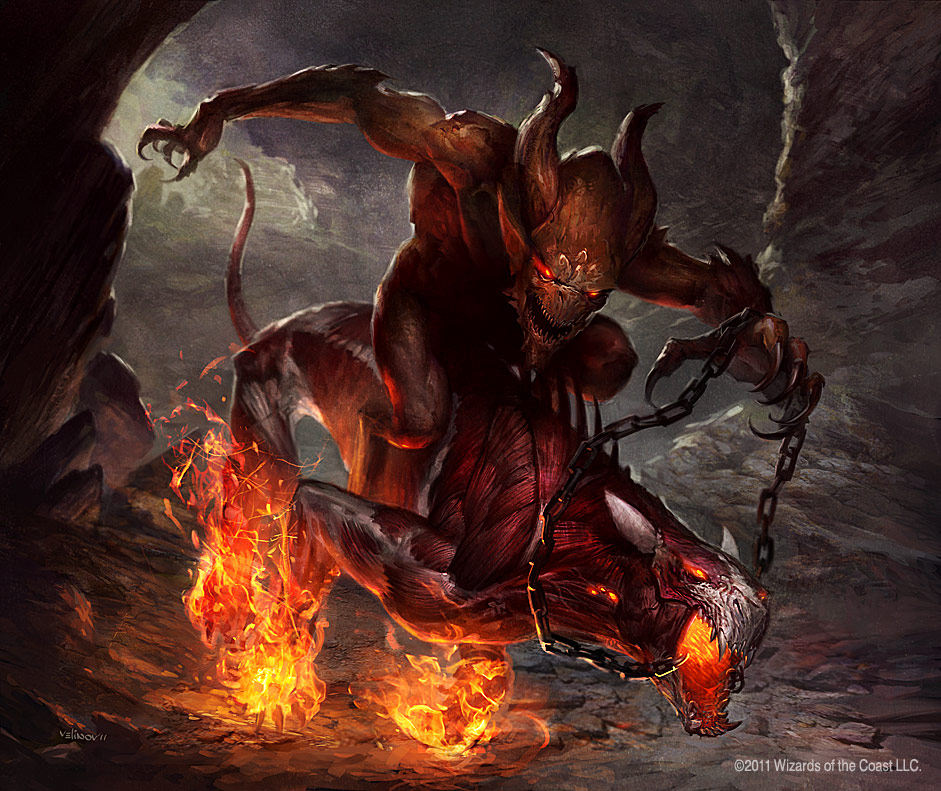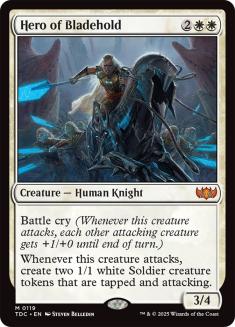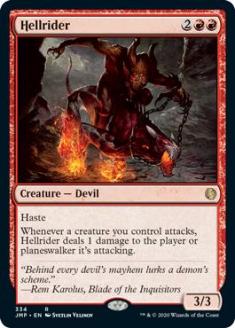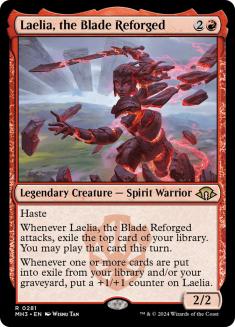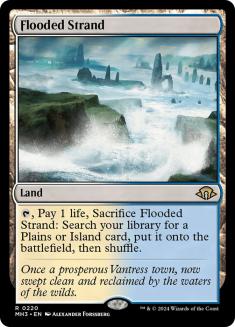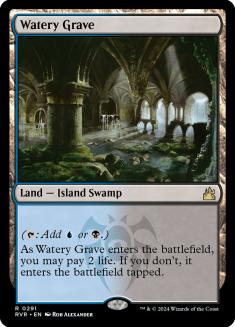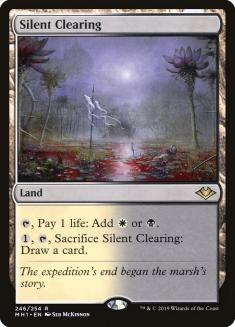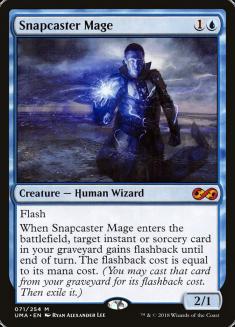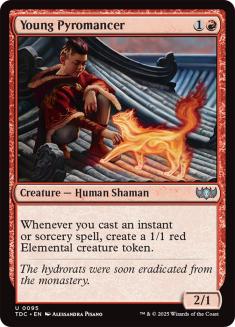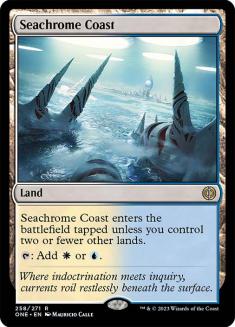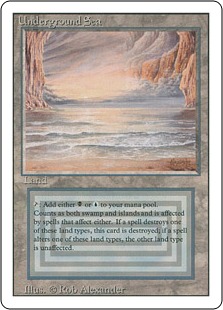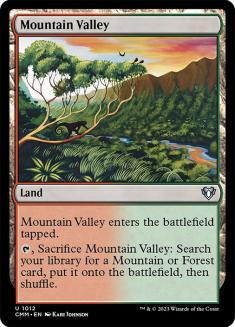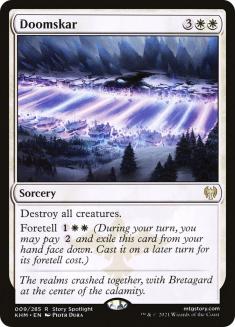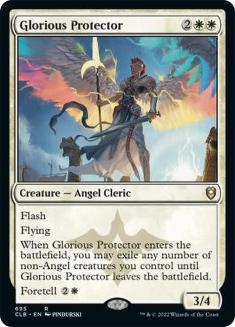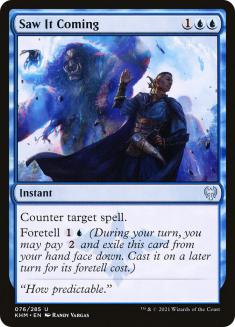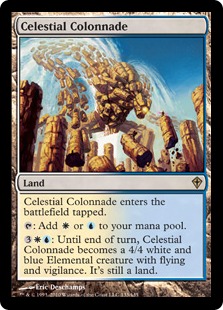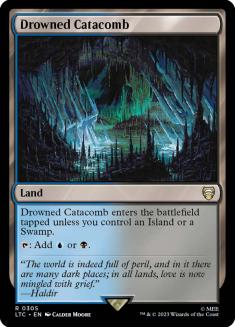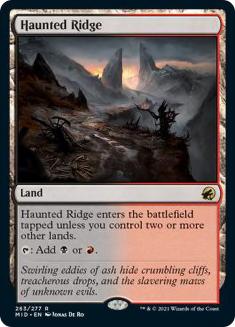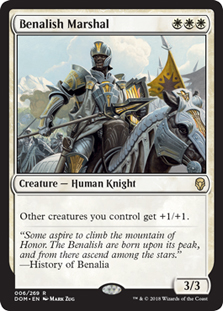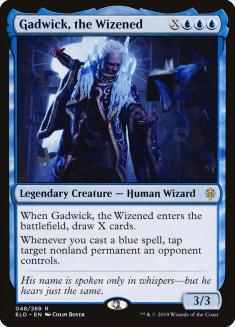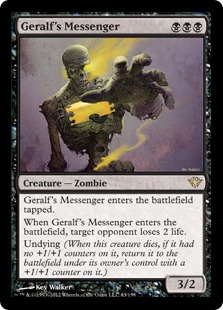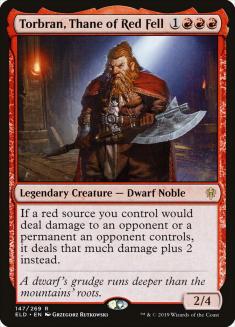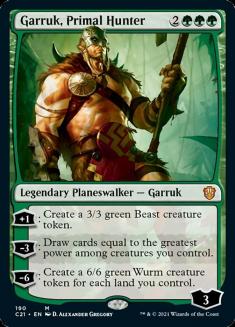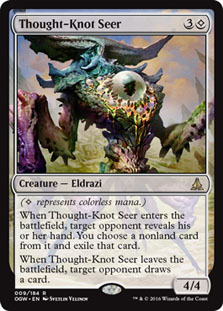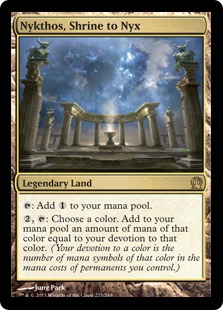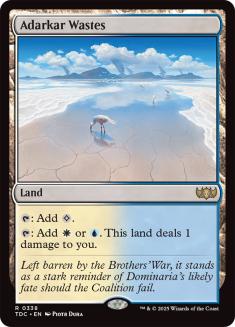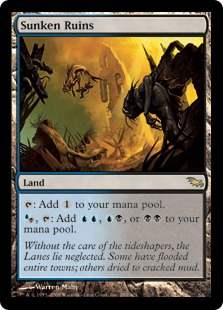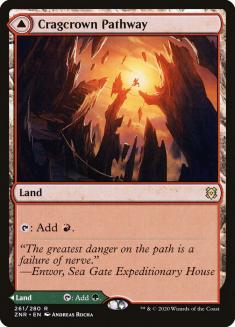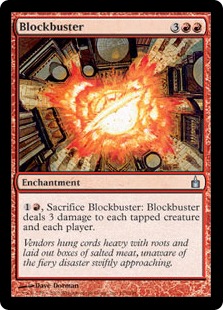With the current lull in digital Cubes and Kamigawa: Neon Dynasty still not fully previewed, I get to spend this week sharing one of my personal projects. I haven’t made it a secret that modular Twoberts have been a focus of mine lately, and we even discussed the concept at length on a recent episode of The 540. In that conversation I posited that it was possible to construct three Twoberts to be played independently or together in any combination without breaking singleton. Today, I will be sharing my findings on a Cube environment comprised of four such modules.
This was always my intention when I started working on my first modular Twobert project, though working on four modules takes considerably more effort than two, and making two work in a satisfying way was an important first step. There’s a lot to go over today regarding what I refer to as “The Hyper Cube” and I won’t get into the design process too much today, but I will reiterate the point I made on the podcast that working on each of the modules simultaneously was incredibly important to reduce instances of reworking things, as well as for keeping my perspective on the final project instead of getting too invested in any individual module.
The Hyper Cube
A lot of The Hyper Cube is a redesign of combinations of cards and archetypes that I’ve been satisfied with previously, but the extra parameters required introducing some new elements. When I started working on the project I wasn’t confident that four modules was a realistic number. I knew three was doable, but the upper limit without breaking singleton while maintaining a power level that I enjoyed realistically couldn’t be higher than four just based on existing land cycles. In fact, the first step I took to design the Cube was to separate land cycles and to identify central themes that I could construct four modules around using these lands.
I didn’t always have clean and presentable names for the four modules, but I eventually landed on a convention that I really like. These names are as such, and the hyperlink will take you to their respective Cube Cobra pages:
I identified having an aggressive and a controlling module as an elegant pair to include in a three-module design on The 540 to mix and match with some aesthetic design. Here, the build-around and devotion modules provide two different offerings on that front. It took quite a while to get a full list of 720 cards together and a bit more time to solidify these lists, and without lowering the power level or breaking singleton, I feel confident in saying that aiming to have more than four modules would be far more taxing than it’s worth. I got a little fancy to even make this size work by ruling “all basic lands are snow permanents” to include cards like On Thin Ice and Ice-Fang Coatl.
The Hyper Cube in Practice
Each of these modules is designed to be drafted as its own Twobert for the purpose of two- to four-player drafts, and combining two or more will facilitate drafts of six to sixteen players. Personally I’m not one to draft with more than eight players, but that is a logistical possibility here in addition to featuring four radically different two- to four-player environments. If you get into the various combinations, The Hyper Cube actually facilitates fifteen(!) different Cube environments.
Some groups are perfectly happy drafting 720- or more-card Cubes without breaking things down into modules, but if you’re like me, then this controlled variance adds quite a lot of value to the experience in terms of increasing player agency and reducing the uncontrolled variance that Cubes of this size typically introduce. Beyond that, the paper drafts that I do these days are generally with two or four players, so having more styles of Twoberts has been my solution to keeping things fresh and engaging.
Now let’s look under the hood and see what makes these four Twoberts tick!
The Aggro Module
The A and B modules for The Hyper Cube are largely made up of ideas featured in my first go at a modular Twobert and my Tempo Twobert. In fact, this module was originally referred to as “the tempo module” until I landed on the alphabetical naming convention. The aggro module doesn’t have the aesthetic concerns of the Tempo Twobert though, so we see fewer cards that lead to Legacy-like games (sorry, Nimble Mongoose) and more cards that are good on rate that you’d play in an aggressive Cube deck. This opens the door for some Cube all-stars like Hero of Bladehold and Hellrider.
This module doesn’t feature sweepers or controlling planeswalkers, and largely tasks players with carving a path to be the beatdown. That said, there are still some value cards like Treasure Cruise and Kroxa, Titan of Death’s Hunger in the spread to facilitate taking a controlling role, as well as a healthy amount of removal to stop the largest creatures from completely taking over games.
The Lands
This module gets fetchlands and shocklands, which is important for facilitating the Death’s Shadow decks. It also means that this module has the best mana-fixing of the lot. This allows players to consistently be able to cast their one-drops on Turn 1, which is most important in the most aggressive decks. This module also has a slight imbalance in mana-fixing lands by featuring the enemy-color Horizon lands, though many decks in this environment play them despite their color-fixing ability and not because of it.
The Build-around Module
The build-around module also has a lot of support for aggressive decks, but the focus is more on a number of micro and macro themes. Blink, sacrifice, delirium, and spells-matter are the macro-archetypes at play here, with black also having a number of Zombies to make sure that Gravecrawler is consistently on.
Something to note about the spells-matter support here is the trade-off between enablers and payoffs made between the build-around and aggro modules. The spells-matter theme in this module is largely centered in blue and red, and the best blue and red payoffs for that archetype are featured here, though the actual spells are largely a list of second-bests. This is to promote synergy with the aggro module which has the best payoffs like Monastery Mentor in the other colors in addition to the best cantrips and burn spells in blue and red. A good Young Pyromancer deck is pretty content to cast any old cheap spell, though a good aggro deck is going to benefit a lot more from specifically having Preordain and Lightning Bolt.
I felt it important to keep things largely to macro-themes for this module rather than the more focused themes found in my original modular Twobert so that the synergies here would blend better with any of the other modules. Getting too specific can be quite punishing in this regard, and I’m happy with the balance I struck.
The Lands
This module also has a slight imbalance in mana-fixing, though this time towards allied colors. With the good fetchlands in the aggro module, I wanted Mirage fetchlands here for the purpose of supporting delirium. They also play incredibly well with the original dual lands, making the mana in this module good enough to support three or more colors with relative ease. Ash Barrens, Fabled Passage, and Prismatic Vista all show up here for the exact same reasons. Fastlands round out the spread here, as great lands for supporting two- and three-color decks with significant diminishing returns on trying to play too many colors.
The Control Module
This module is largely a riff on my original Twobert. Many of the more aggressive elements have found their way into other modules to make this environment even grindier. My favorite change is an introduction of a foretell package, which I always talk about when the topic of Doomskar comes up, and I love the guessing game that this package invites.
This is where you’ll find most all of the sweepers in the Cube, and the creature selection here is heavily informed by this. That is to say, most of the creatures in this module are included with the idea that they provide some manner of insulation against sweepers. This can be creatures that singlehandedly demand a sweeper, flash threats, creatures with recursion or ways to be indestructible, are creatures that generate value otherwise. This is possibly the most important element of this module, as the sweepers would be incredibly disruptive to the other modules otherwise.
There are, of course, some creatures in the spread just to attack and block. It doesn’t make much sense to have a controlling module with powerful removal spells like Swords to Plowshares and nothing meaningful to point them at. I also like that there is some ability to go under your opponent and present good attacks against the heavy selection of planeswalkers available. Beyond that, these creatures are the glue that allows this module to combine with other modules in a satisfying and not strictly adversarial way.
The Lands
The lands in this module are as midrange as can be, with creature-lands, slowlands, and buddy lands in the spread. None of these will ever enter the battlefield untapped on the first turn, and while I normally hate that sort of thing, it really works here. There are enough lands to consistently play three-color decks, but not so much that four- or five-color decks show up terribly often. That’s the sweet spot for midrange environments for me, as this means that decks tend to feel like there’s more going on than just casting the best spell on curve every turn.
The Devotion Module
I’ve talked a bit on The 540 about my experience working on Cubes with mono-color themes and the difficulties associated with them. This module is the expression of everything that I’ve learned on that front. There are some heavily pipped cards that reward players for playing mono-color decks, but there are far more cards with only one pip, and both hybrid and colorless cards are heavily featured to make draft lanes less rigid and also more forgiving when the color you’re trying to draft isn’t well-represented in every pack.
Two of my favorite aggressive Cube cards are Porcelain Legionnaire and Scrapheap Scrounger, and they’re just a couple more cards that help to promote sometimes playing mono-color. I also bend the rules a little by having Shaile, Dean of Radiance and Augmenter Pugilist in mono-color columns, but you frankly need the help if you’re playing either card primarily for their other sides. The “cheap” Eldrazi suite is another tool that I employed here, and I particularly enjoy the way that Nykthos, Shrine to Nyx ties this package to the devotion theme.
This is also another place where I got a little fancy by allowing players to add any number of basic Wastes to their deck after drafting. This is slightly unconventional but not a generally powerful thing to have access to.
The Lands
The manabase for this module features two types of duals that can produce colorless mana in painlands and filter lands, with Pathways rounding out the selection. I actually really like the synergy between Pathways and filter lands, allowing you to cast a one-drop of either color off your Pathway and then utilize the corresponding filter land to mitigate the downside of locking in that color for the rest of the game. I’m much colder on painlands than many Cube designers, but the combination of them enabling the Eldrazi package and keeping players to a small number of colors really works here.
I made sure to include a handful of powerful individual cards in this module given that the devotion theme translates most poorly into the larger environments. There’s enough going on that you’ll play Nylea, God of the Hunt in eight-player drafts sometimes, but definitely not always. Cards like Luminarch Aspirant, Counterspell, Shriekmaw, Embercleave, and Esika’s Chariot pick up the slack in this regard.
Putting It Together
I’ve gone over a few ways that I seeded for the individual modules to play well together when mixed, and there’s plenty more going on there both in terms of intentionally scattered synergies and the way the themes contrast with each other in interesting ways. Some intentional cross-pollination goes a long way in making sure that an environment like this is fun and replayable, and there are countless moments of discovery and exploration otherwise.
Making Your Own
I’m proud of and happy with The Hyper Cube as is, but there’s all kinds of space to explore with regard to modular Twoberts and modular Cubes broadly beyond this. If you’re looking for an incredibly replayable 720-card Cube to support varying sizes of drafts and you like what you read here, then by all means, I recommend this build, but I do have some additional thoughts for anybody interested in modifying this environment or designing their own.
First off, three Twobert modules strike me as the sweet spot in terms of offering more than enough replayabilty and being much less burdensome to design than four. The basic template of “aggro module, control module, X module” is easy enough to employ, and lets you flip a switch on whether you’re playing with a group that likes big effects or lower-to-the-ground games. You could also choose to make all three modules the same macro-archetype, with each module offering a different spin on it. You could do something like having a Modern, Legacy, and Vintage module. There’s really no limit to this design space.
A sticking point for me that I mentioned was breaking things down by land cycles, though breaking singleton opens up this space even more. For example, if you wanted to start with the template of a Modern, Legacy, and Vintage module, you’d probably want to at least break singleton on lands across the modules. You could also just ignore any of these design parameters and shuffle any two Twoberts together if you have an appetite for that sort of thing. That doesn’t scratch the itch for me, but it’s definitely far less work.
Going Even Bigger
Alternatively, there’s also space for designing a modular environment with even more modules. Without a specific vision this strikes me as overwhelming territory, but I did have one idea of a modular Cube with a large number of Twobert modules that I found intriguing.
The premise is that you’d have a module for every block in Magic. It would be sort of like having a gauntlet of decks to play against each other, except you’d do things like shuffle together your Invasion Twobert and your Time Spiral Twobert to play an eight-player draft.
This would definitely involve breaking singleton across the Cube and would likely involve breaking singleton in the individual modules too. With regard to breaking singleton across the whole Cube, you can use printings from appropriate sets.
You could avoid breaking singleton in the individual modules as well as heavily cut down on the work involved in this project by breaking things down by larger eras in some way. For example, different Standard or Extended environments could each have their own module. The block model was something that I quickly dismissed as being below a power level that I find compelling, but I’m worried that some broader definition of eras excites me more and could end up being something I actually end up working on…
Modular Twoberts continue to be a space that I really enjoy, especially with the majority of my drafts being with a small number of players these days. As Ryan Saxe and I discussed on The 540, it’s the individually draftable nature of the Twobert modules that makes this type of design so appealing, and I hope that you’re intrigued by some of these individual designs, even if the whole Hyper Cube experience isn’t for you. Thanks for reading, and happy drafting.

